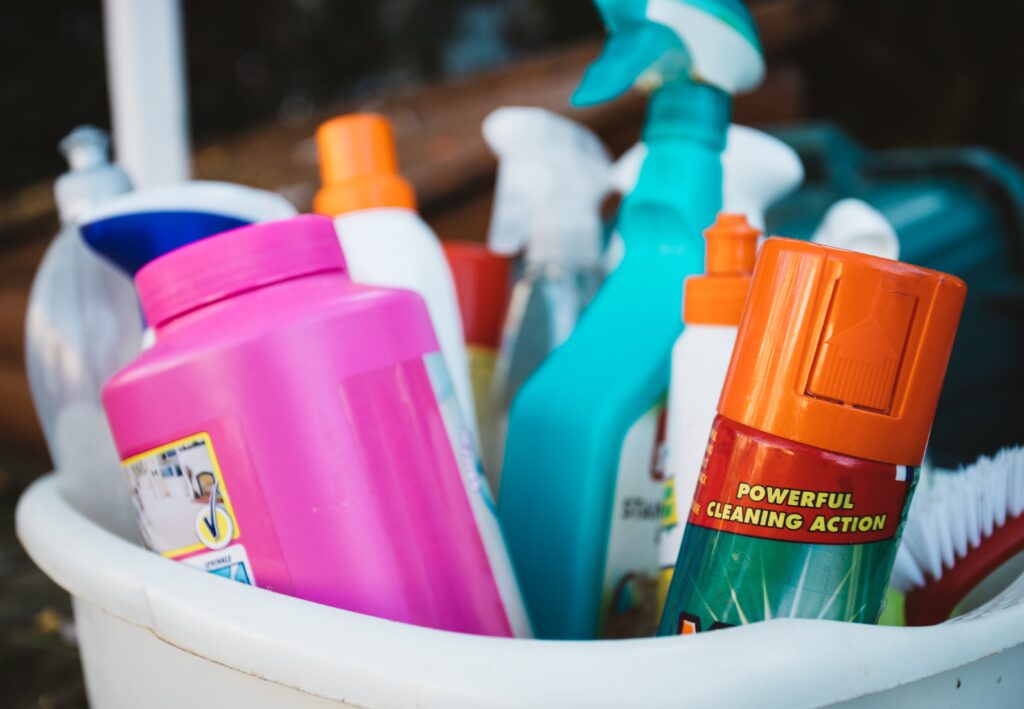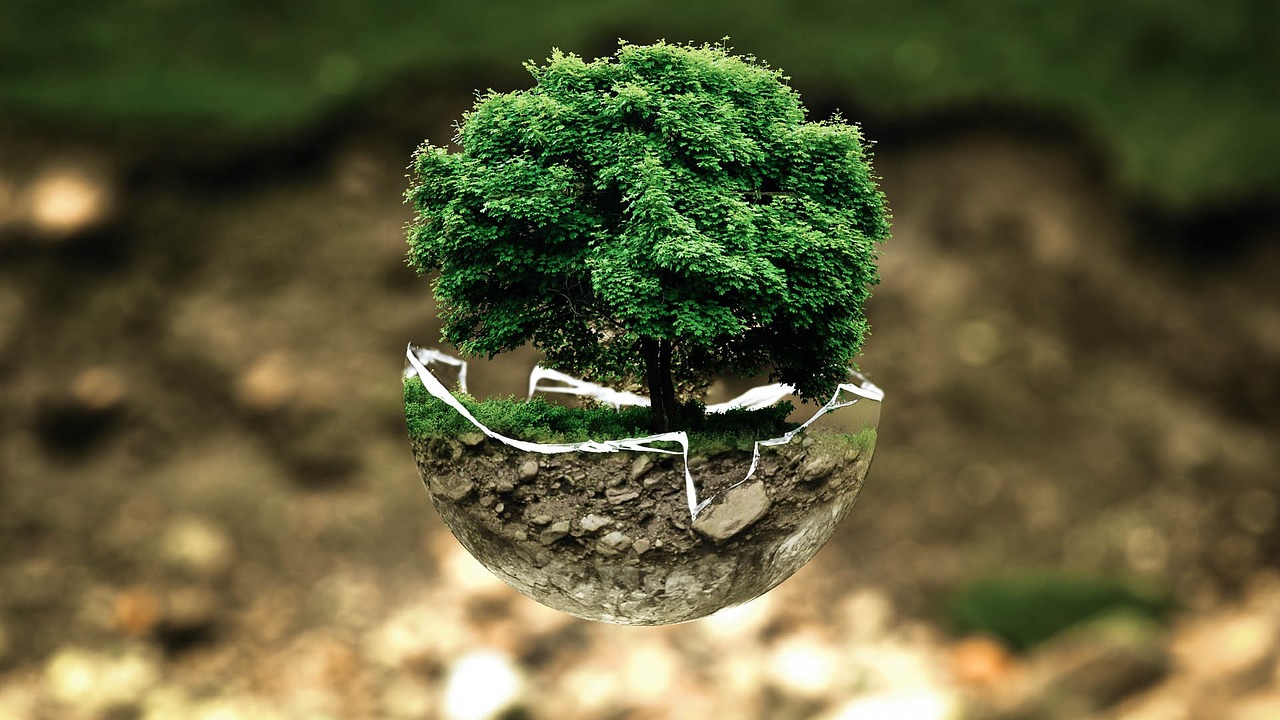
There is a real environmental issue which has cropped up with the prevalent usage of synthetic materials. Over time, our dependence on synthetic materials has grown significantly, and only now are we beginning to research and understand the ramifications of the creation and usage of these synthetic materials. The issue at hand is microfiber pollution. Microfiber pollution is taking an incredible toll on our natural ecosystems and causing untold damage.
Microfiber cloth vs microfibers
It is important to understand that there is a common misconception about microfiber pollution. While there is a household label for “microfiber cloths” which can encompass the soft cloth you may use to wipe down electronics without harming them, microfiber pollution happens significantly with any synthetic fabrics, and sometimes with natural fabrics as well. It is important to note when referring to microfiber pollution, it is not specifically addressing the standard household “microfiber cloth” which is usually created from a blend of polyester and polyamide or nylon (which means it is made from plastic), but in fact the microscopic fiber residue that is left behind when using or washing synthetic fabrics.
Why do we opt for synthetic?
Many individuals, companies, and otherwise opt to wear and use synthetic materials. In fact, it is difficult to shop for items that are naturally produced, and those with synthetic fabric allergies can attest to just that. Most clothing, towels, and fabrics are made from synthetic materials as they are cheaper to produce and may be beneficial for different uses. Polyester, for example, is extremely durable and long lasting, resistant to stretching, shrinking, and wrinkles, but is made from fossil fuels. 60% of our garments today use polyester. Some of these clear-cut differences lead individuals into opting for the fabric which will give them the most “bang for the buck”, which often means opting for the synthetic option. Many cleaning companies choose to utilize microfiber synthetic wash cloths for wiping down surfaces, as they provide a more sufficient clean, usually do not scratch or harm the surface, and often do not leave streaks behind.
All cloth washed in water gives off fibers, hence the name “microfiber pollution”, also known as “microplastic waste”. The “microfiber pollution” happens when tiny microscopic fibers shed from the fabric, whether it is clothing, upholstery, or a cleaning cloth. These microscopic fibers, or microfibers, are so small that they often cannot be filtered out using traditional methods. Waste water from washing is returned to the oceans, rivers, wells, lakes, and even groundwater. In a study performed by the University of California at Santa Barbara, it was found that on average, synthetic fleece jackets release 1.7 grams of microfibers in each wash.
Defining “waste” and addressing misconceptions
There are two types of microplastic waste that can harm the environment. One is primary microplastics, which are directly released into the environment in particulates. This can encompass shower gels or cosmetic items with microbeads. They can also originate from the abrasion of large plastic objects during manufacturing or maintenance, including the washing (abrasion) of synthetic fabrics. The second type of microplastic waste is secondary microplastics, which happens when larger plastic items degrade into smaller plastic items when introduced into a marine environment. This can include discarded plastic bags or lost fishing nets.
Unfortunately, there is a common belief that the bulk of oceanic waste is due to the secondary microplastics or “mismanaged waste”: “Jambeck (2015) reported that between 4.8 and 12.7 Mtons of plastic are released globally into the oceans every year because of mismanaged waste.” Levels of primary microplastic pollution released yearly globally into oceans is still unknown and has yet to be accurately assessed. However, when levels of microplastics in lakes and rivers and Europe, North America, and Asia were studied, it is likely to indicate that a significant release of microplastics would also contaminate oceans.
“One study showed that plastic abundance in the Austrian Danube was even higher than that of drifting larval fish, mostly in the form of industrial raw materials such [as] pellets and flakes (Lechner et al., 2014). Two other studies found that much of the plastic found in surface water originates from cosmetic products such as facial cleaners or from textiles (Browne et al., 2011; Driedger et al., 2015).”
Primary Microplastics in the Oceans – The Story of Stuff Project
Oceans are affected
The world at large consumes about 588,000 kilotons a year of plastic in the form of synthetic textiles/fabrics. Compared with other methods of plastic consumption such as plastic pellets at 257,000 kilotons a year, synthetic fabrics are the most consumed (created, purchased, traded) plastic item yearly. It is no surprise that daily, weekly, or otherwise laundering of these synthetic textiles at such a bulk scale can produce secondary microplastic waste (microfiber pollution) through abrasion, which is then carried off by waste water and disposed of. A study in 2011 by Mark Browne of University of New South Wales, Australia found that microfibers made up 85% of human-made debris on shorelines around the world.
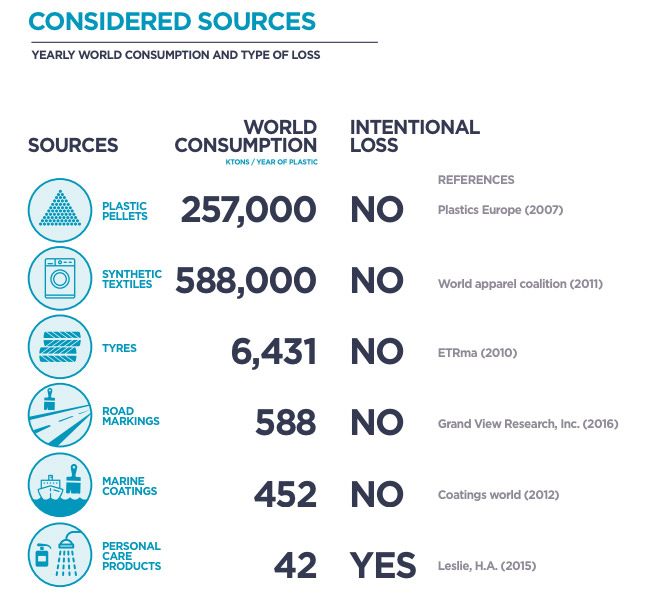
“Significant amounts of these textile fibres have been observed in many in situ sampling studies both in open water and marine sediments (Browne et al., 2011). These fibres are typically made of polyester, polyethylene, acrylic or elastane (Essel et al., 2015).”
Primary Microplastics in the Oceans – The Story of Stuff Project
Clearly there is an issue with microfiber pollution and microplastics being inadvertently washed into lakes, streams, rivers, and eventually the ocean. Since these microplastics are too small to see or filter out with standard filters, they end up in environmental habitats, where they may have drastic effects on wildlife or their habitats.
In a study conducted in 2016, 27 species of meiofauna were observed on six sandy beach locations from the Atlantic Ocean and Mediterranean Sea. Meiofauna of the Saccocirrus species (A type of small worm that lives in sand) were observed in all beaches, and found with microfibers inside of their gut.
“All ingested microfibres were monofilament strands, heavily coloured (blue or red), with a rigid conformation, not friable when handled, and often sharp-edged. Microfibres had a cylindrical shape varying in length from 2 to 4 mm and ranging between 25 and 100 mm in diameter (Figs. 2 and 3). The origin of these microfibres is unknown, but their characteristics are similar to those described for synthetic microfibres often observed in situ (Remy et al., 2015). Their appearance and size suggests they are likely fragments of fishing lines and nets or clothing/industrial material made of plastic polymer.”
In situ ingestion of microfibres by meiofauna from sandy beaches
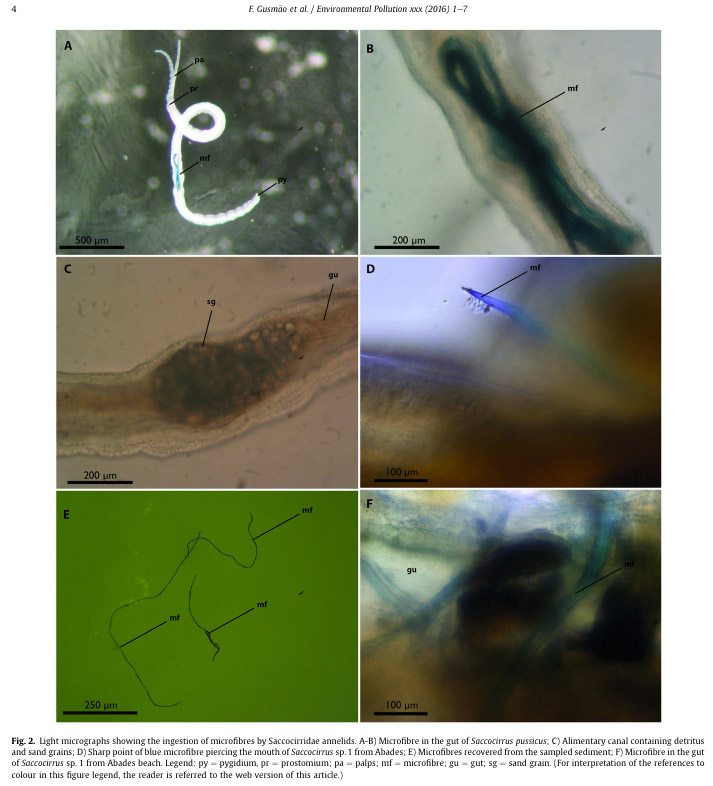
Those small samples of tiny sand worms indicate that organisms are inadvertently eating and attempting to digest these microfibers. It is easy to assume where the microfibers will end up after that. Other microscopic organisms may attempt to digest these indigestible materials, which could result in problematic fatalities, malnutrition, or otherwise. Microfiber ingestion can lead to altered behavior in animals, a study conducted by the University of Exeter found. Plastics leach chemicals such as Bisphenol A (A BPA) as they degrade. Larger animals that subsist on these microscopic organisms for sustenance will also inadvertently end up with these microfiber plastic pieces on their guts, and so on. Larger organisms can also inadvertently catch these microscopic pollutants while attempting to catch other prey, given they are often floating on the surface or have sunk to the bottom, and are generally imperceptible to most creatures. These fibers have the potential to bioaccumulate, concentrating toxins in the bodies of larger animals.
Fresh water is affected
This issue is not limited to oceans, however. Fresh water bodies can also suffer from the inadvertent shedding of microfibers. Since rivers and lakes often empty out into the ocean, it is easy to see how these plastic fibers end up in freshwater areas to begin with. Scientists have reported microfibers are the most common type of debris in Lake Michigan.
We are contaminating our own food supply
What this means for us as humans is that we are contaminating our own food supply. In a study conducted in 2016, when seafood was tested from California and Indonesia, fish and shellfish were both found to have contained debris made of plastic. More alarmingly, the US-based samples were primarily contaminated with plastic fibers. It is speculated that washing machines are less common in Indonesia, and the availability of synthetic fabrics is less common in Indonesia, resulting in the higher accumulation of fibers in fish in the US.
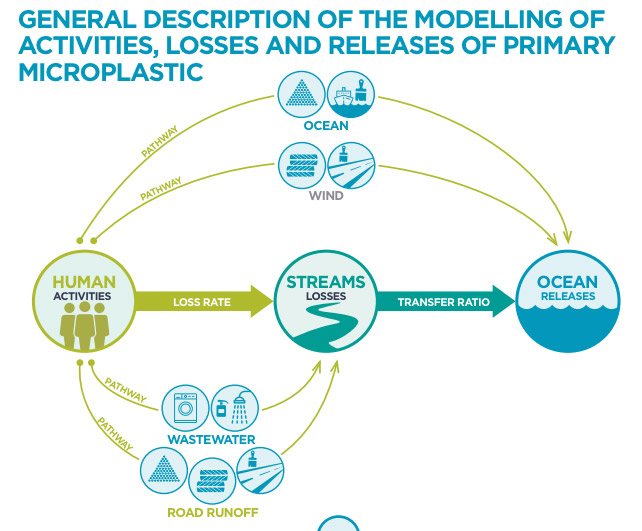
How can we prevent this?
While there is no way to stop all microfiber pollution, there are steps that are being attempted at an industrial scale. Many companies are working on creating waterless washing machines, and others are attempting to create filters for home and industrial washing machines to help prevent microplastics from escaping into waterways. Unfortunately, change will not come quickly, given the problem of washing machine retrofitting and consumer awareness.
However, individual steps can be taken to try to reduce microfiber pollution: attempting to purchase and use only natural materials can help reduce your individual footprint and addition to this problematic crisis. Natural textiles can reduce the amount of waste, however they must be free of harmful chemicals and dyes to ensure minimum impact on the environment.
In conclusion, microfiber pollution exists, and scientists have found it to be a reasonable cause for alarm. Our oceans and waterways are being overtaken by plastic debris that is often entirely imperceptible to the human eye. We must pressure our governments and industries to make significant changes to protect the future of our environments — and our own health.


